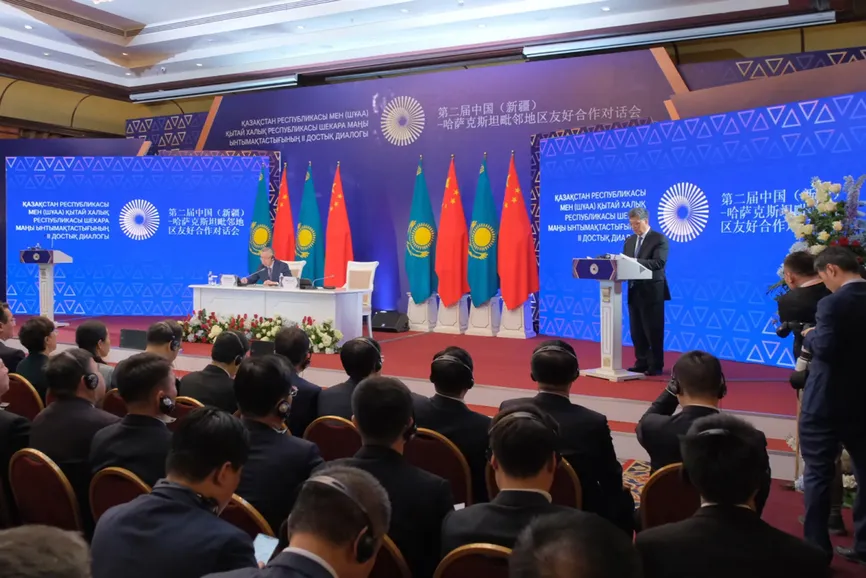During the 2nd cross-border cooperation dialogue between Kazakhstan and China, the parties agreed to strengthen bilateral economic relations and signed five commercial contracts worth $565.4 million, QazMonitor reports citing PM’s press service.
Serik Zhumangarin, the deputy prime minister – minister of trade and integration, highlighted the positive dynamics of bilateral relations, saying that after ten years of the Belt and Road initiative, the China-Kazakhstan partnership has reached a new qualitative level.
"Today, Kazakhstan [and China] has 3,300 joint ventures in strategic industries such as mining and metallurgy, manufacturing, and others," noted Zhumangarin in his opening speech.
He also emphasized the key role of Xinjiang in bilateral cooperation, as the region accounts for more than 40% of the total trade turnover between Kazakhstan and China.
Prospects of Kazakh exports to China
The two countries have great potential for expanding trade and economic cooperation, as Kazakhstan is ready to offer Chinese consumers a wide range of industrial and agricultural commodities across 135 items worth over $1 billion. In particular, Kazakh enterprises can supply China with chilled meat products, fish products, poultry and offal, pork, eggs, horsemeat, and other types of products with high profit margins.
"For this purpose, it is essential to eliminate disease-related restrictions on local meat exports to China. A few days ago, the World Organization for Animal Health recommended that five southeastern zones in Kazakhstan be approved for FMD-free status due to the vaccination [coverage]," said Zhumangarin.
In his speech, the trade minister noted that the country requires specialists from the General Administration of Customs of China to conduct inspections of Kazakh producers of crop and livestock products. According to him, this will expedite the signing and approval process concerning the standards for certain types of domestic agricultural products.
To this end, he also proposed the creation of a joint subcommittee on agriculture between the two countries to address mutual trade issues.
"Kazakhstan is ready to increase the volume of annual wheat supplies to China to 1 million tons and more. We have all the necessary infrastructure for this purpose. I gave the order to launch a pilot grain shipment to the bonded zone of China," added Zhumangarin.
Border control
During the forum, the parties also discussed ways to improve the Khorgos International Center for Border Cooperation, the Khorgos-Eastern Gate special economic zone, and the Trans-Caspian International Transport Route.
The Kazakhstan part of the Trans-Caspian route has seen an increase in railway freight traffic. In 2022, the volume increased by 1.1 million tons to 9.4 million tons. At the same time, transit transport by road from China doubled to 980,600 tons.
To facilitate favorable infrastructural conditions in the port of Lianyungang, the Kazakh-Chinese logistics terminal has formed the necessary base for the unimpeded transit of goods. In addition, the parties also plan to open a third railway crossing near the Bakhty-Chuguchak road crossing and establish a trade hub in Urumqi and Almaty.
B2B contracts
Kazakh and Chinese entrepreneurs conducted B2B negotiations in various sectors of the economy – construction, energy, mining, agriculture, food processing, engineering, tourism, investment, and others. Sixteen bilateral documents were signed during the forum, including five commercial ones worth $565.4 million.
